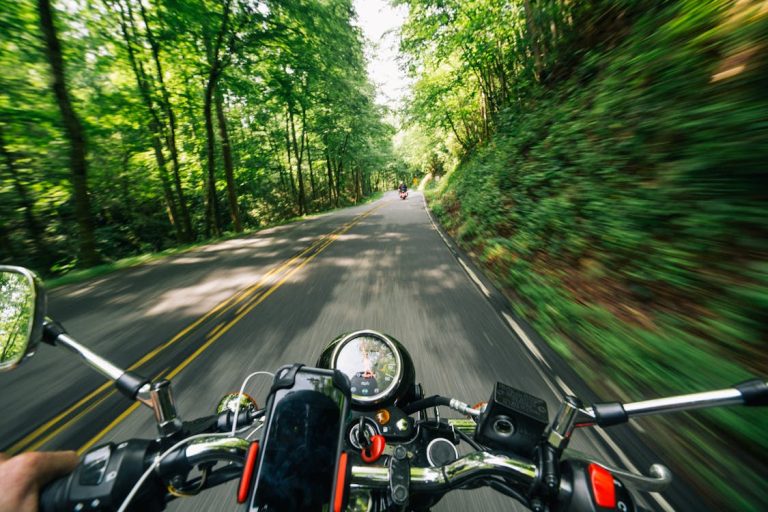The Ultimate Beginner’s Guide to Motorcycles: Your First Ride Starts Here
If you’ve been thinking about riding a motorcycle, you’re not alone. The freedom, excitement, and thrill of the open road are irresistible to many. But before you rev that engine and hit the pavement, it’s important to learn the basics. Whether you’re just starting to consider riding or you’ve already taken the plunge, this beginner’s guide will provide you with the essential information to help you choose the right bike, stay safe, and become a confident rider.

1. Understanding Motorcycle Types: Finding Your Perfect Ride
Motorcycles come in all shapes and sizes, and choosing the right one is crucial for both your safety and comfort. Here are the most common types of motorcycles that beginners typically gravitate toward:
- Cruisers: These are popular bikes for new riders due to their low seat heights and relaxed, comfortable riding posture. Harley-Davidson and Indian Motorcycle are classic examples, but many manufacturers offer cruiser models for every budget.
- Sportbikes: Known for their high-performance engines and aggressive styling, sportbikes like Yamaha R3 or Kawasaki Ninja 400 can be great for those who want speed and handling. However, they tend to have a more forward-leaning riding position that may not be ideal for everyone.
- Standard Motorcycles: These are versatile, all-around bikes with an upright riding position. Standard motorcycles, such as the Honda CB500, are a great option for beginners who want something that’s both comfortable and practical.
- Dirt Bikes: If you’re into off-road adventures, dirt bikes are a great way to get started. They are lightweight and designed for handling rough terrain, making them perfect for learning to ride.
Before deciding, consider your intended riding style. Do you want to cruise through the city, hit the highway, or explore dirt trails? Test ride a few bikes at your local dealership to get a feel for what suits you best.
2. Choosing the Right Size Motorcycle
When selecting your first bike, it’s crucial to pick one that fits you physically and skill-wise. A bike that’s too heavy or too powerful can make learning to ride much harder.
- Engine Displacement: For most beginners, bikes with engine sizes between 250cc and 500cc are ideal. These bikes offer enough power for learning but aren’t so fast or heavy that they become difficult to control.
- Seat Height: Make sure you can comfortably touch the ground with both feet while seated on the bike. This is essential for maintaining balance when stopping and starting, especially in traffic or on uneven ground.
- Weight and Handling: Lighter motorcycles are easier to maneuver, especially at low speeds. Pay attention to how the bike feels when you sit on it and when you push it around in the parking lot.
3. Safety First: Gear Up for Protection
Riding a motorcycle is an exhilarating experience, but it also comes with risks. Protect yourself by investing in the right gear. Here’s a quick rundown:
- Helmet: A DOT-approved full-face helmet offers the best protection in case of a fall or accident. It protects your head, face, and neck from serious injury.
- Jacket and Gloves: A sturdy jacket made from leather or textile with armor inserts will protect your body in case of a slide. Pair it with gloves for grip and to protect your hands in the event of a fall.
- Pants and Boots: Jeans or other protective pants designed for riding offer more protection than regular clothing. Riding boots with ankle protection help prevent injuries from falls.
Remember, you can never have too much protection, so don’t skimp on quality gear.
4. Taking the Motorcycle Safety Course
Before you even think about hitting the road, it’s wise to take a Motorcycle Safety Foundation (MSF) course. These courses teach the fundamentals of motorcycle control, hazard awareness, and safe riding techniques. Most courses offer both classroom and practical riding instruction and may even provide a bike to use during the course.
Not only will you learn valuable skills, but completing an MSF course often qualifies you to skip certain parts of your state’s licensing process, making it an efficient and safe way to start your riding journey.
5. Mastering Basic Riding Skills
Once you’ve chosen your bike and safety gear, it’s time to learn how to ride. Some key skills to master early on include:
- Throttle control: Learn how to smoothly operate the throttle to accelerate without jerking the bike.
- Shifting gears: Practice shifting gears and clutch control to ensure you can smoothly transition between speeds.
- Braking: Learn how to use both front and rear brakes effectively. The front brake is the most powerful, but don’t forget the rear brake when coming to a complete stop.
- Turning and cornering: Practice leaning into turns and maintaining a steady speed while turning to avoid instability.
- Low-speed maneuvers: Work on tight turns, U-turns, and balance at low speeds, especially in parking lots or safe, controlled environments.
6. Riding Responsibly and Staying Safe
Once you’re comfortable riding, it’s essential to be a responsible and defensive rider. Follow these tips for a safe riding experience:
- Be visible: Always wear bright or reflective clothing, especially when riding at night. Keep your lights on and ensure other drivers can see you.
- Obey traffic laws: Stick to speed limits, use turn signals, and follow road signs. Remember, you have to share the road with cars, trucks, and pedestrians.
- Stay alert: Watch for hazards, such as potholes, debris, and other vehicles. Always keep an eye on your surroundings and anticipate the actions of other drivers.
- Avoid distractions: Keep both hands on the handlebars and both feet on the footpegs while riding. Avoid using your phone or other distractions that can take your focus off the road.
7. Maintaining Your Bike
Regular maintenance is key to keeping your bike running smoothly. Perform routine checks on tire pressure, oil levels, brakes, and lights. Follow your bike’s manual for maintenance schedules, and don’t hesitate to take your bike to a professional mechanic for more complex issues.
Conclusion
Learning to ride a motorcycle is an exciting and rewarding experience that opens up a world of adventure. By choosing the right bike, investing in quality safety gear, taking a safety course, and practicing regularly, you can set yourself up for a lifetime of enjoyable and safe riding. So, what are you waiting for? The open road awaits!



